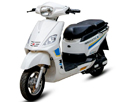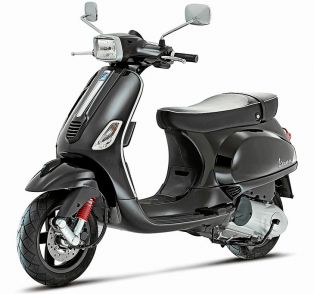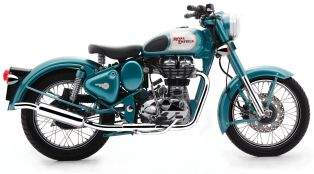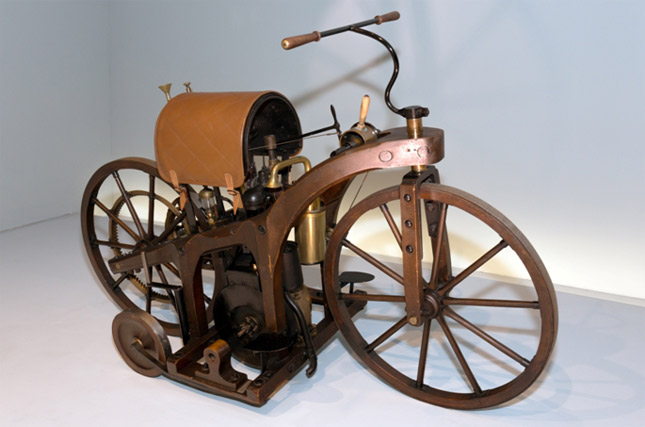
*** Daimler Reitwagen 1885
What is a motorcycle? A vehicle with two wheels, that is powered by a motor. In other words, it must use a gasoline internal combustion engine to qualify as one. Keeping this factor in mind, the first motorcycle in the world is the Daimler Reitwagen, invented by Gottlieb Daimler and Wilhelm Maybach. Yes the same Daimler & Maybach who founded Daimler Motors Corporation which went to merge with the Benz & Cie., becoming Daimler Benz and then selling cars under the famous Mercedes-Benz moniker.
Today the company stands as Daimler AG. Wondering how the inventors of the first motorbike went on to form a company which sold cars rather than bikes? The story goes like this. Daimler along with Maybach had developed a compact, high speed single –cylinder engine, patented on April 3, 1885. For some strange reasons it was called the “Grandfather Clock Engine” as Daimler felt it resembled a large pendulum clock.
Without getting into too much technical details, let me state that the engine could run on coal gas and it used twin flywheels and had an aluminum crankcase. Their next step was to test the engine to prove its viability in a vehicle. They wanted to learn what the engine could do and as the engine prototype was not powerful enough for a full size carriage, they put it in a two wheeler. In a way, on their journey to make a four wheeled car, they earned the title of being the inventors of the motorcycle.
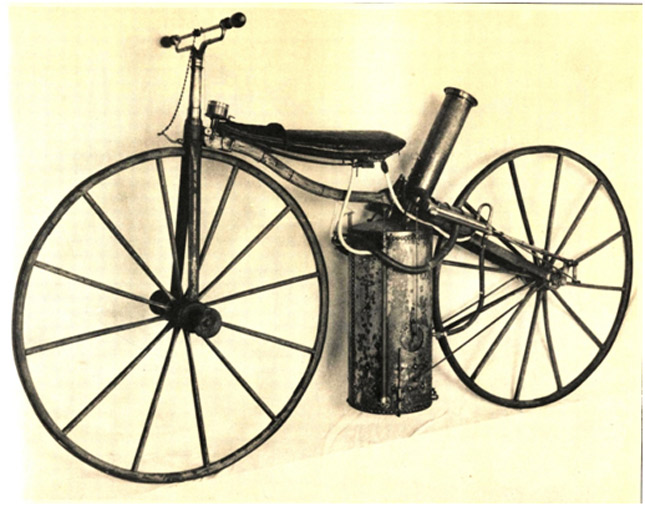
*** Slyvestor Roper's Steam Velocipede 1869
Let’s for a change, keep the definition of motorcycles aside and go back in time and give credit to some extraordinary brilliant inventors who had been instrumental in bringing the motorcycle into this world. The Steam Cycles! There is still a debate on which motorcycle is the first one in the world, the one built by the genius American inventor, Slyvestor Roper or the one built by Pierre Michaux and Louis– Guillaume Perreaux. Experts say both the motorcycles made by the respected individuals were arguably made around the same time in 1869.
Let’s start with seeing Roper’s two wheeled wonder first. To start with, Roper was a brilliant person who had many patents to his name. His motorcycle was known as the Steam Velocipede. It was a bicycle fitted with a double acting two cylinder engine fired by a charcoal burner. The spring mounted vertical fire tube boiler sat behind and under the seat. I personally love the way it looks like an under seat exhaust. There were two crankshafts on both sides of the rear wheel which were driven by the two cylinders through the connecting rods.
Its two 34 inch diameter wooden spoke wheels had wooden fellows and iron man tires. It had a wheelbase of 49 inches and its front wheel was supported by a forged wrought iron fork with a straight handlebar and a wooden handgrip. I would like to highlight this very important feature, something which today gives our bikes the unique throttle twisting action we all love. On Ropers machine, located at the front of the boiler housing, the throttle mechanism was actuated by forward twisting of the handlebar. Also, a friction brake was applied against the rim of the front wheel when the handlebar was twisted towards the rider. The water supply for the boiler was contained in the tank which also served as the saddle. Footrests were provided at the bottom of the fork.
Sadly, Roper died of a heart attack while giving a demonstration of his machine in 1896. He was said to be unofficially clocked at a speed of 64 km/h a few days before his death.
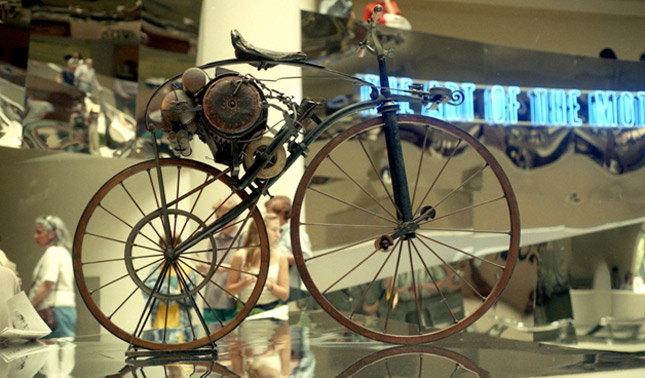
*** Michaux- Perreaux Steam Velocipede 1867-1871
The other bike or rather motorcycle which is also claimed to be the first one by many is the Michaux- Perreaux Steam Velocipede. It was made in France probably between 1867 to 1871 and is said to be created by Pierre Michaux’s son Ernest. It was made by attaching a Louis-Guillaume Perreaux commercial steam engine to a Pierre Michaux manufactured iron framed pedal bicycle which was also known as the Boneshaker. This one used twin leather belts to draw power to the real wheel from a single cylinder alcohol fueled Perreaux engine. A steam pressure gauge was mounted above the front wheel and the steam was regulated with a hand control. Same like Roper’s, only a single piece was built but by 1884, Perreaux exhibited a tricycle version of his Steam Velocipede.
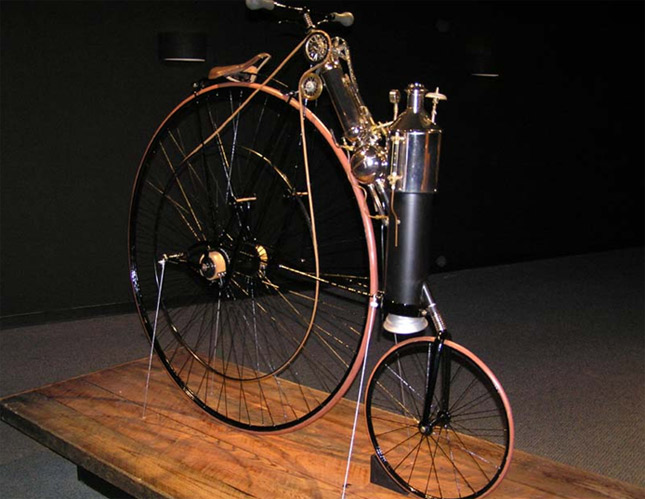
*** Copeland Steam Bicycle 1881
There was also a third steam powered two wheeler which is lesser known. It was the Copeland Steam Bicycle made by Lucius Copeland in 1881. His design was based on a Penny-Farthing which is a type of bicycle having a large front wheel and a small rear one. It had a steam boiler driving the large rear wheel. Yes, a large rear wheel. Unlike typical Penny-Farthing bicycles, his machine had a small wheel at the front which was turned by the handlebar for steering.
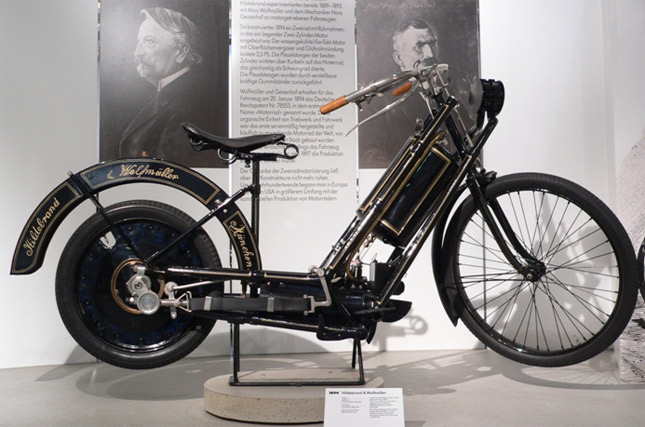
*** Hidebrand & Wolfmuller 1894
Then later in 1885, Daimler & Maybach arrived with their Daimler Reitwagen, then came the Butler Petrol Cycle in 1887. 1894 saw the arrival of the world’s first series production motorcycle– The Hidebrand & Wolfmuller. This was actually the first two wheeler to be called a ‘motorcycle’. From there on, many bicycle manufacturers adapted their designs to accommodate the new internal combustion engine. Excelsior Motor Company began production of their first motorcycle in England in 1896. 1898 saw Charles Metz start production of his Orient-Aster motorcycle in his factory in Waltham, Massachusetts. It was the first production motorcycle in the US.
Slowly, the engines became more powerful and the motorcycles started looking lesser like bicycles. Then came the famous brands as we know them today. 1898 saw Triumph Motorcycles commence production. An year later it was joined by Royal Enfield. Then came Norton in 1902 and Birmingham Small Arms Company (BSA) in 1910. All of them were British firms. The famous American brands Indian and Harley Davidson started production in 1901 and 1903 respectively.
Disclaimer: Picture Credits to their respective owners.
By: Akshay Tajbije





